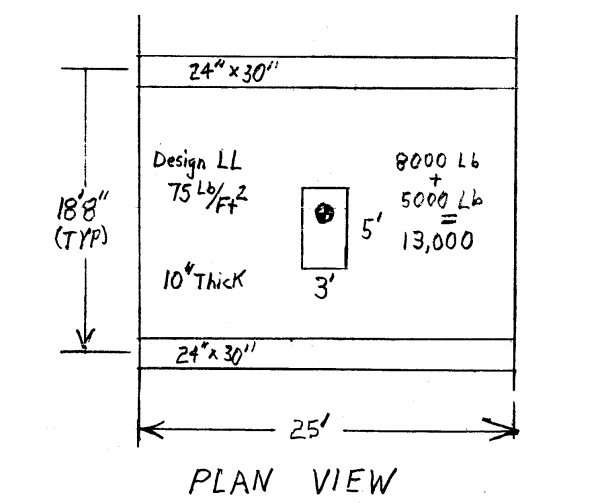mason2023
Specifier/Regulator
- Nov 29, 2023
- 8
I need advice on a specific load calculation for a project. Our task involves using a forklift (8000 pounds) on a 10-inch concrete deck, designed for a maximum live load of 75 psf. The deck is supported by 24-inch wide by 30-inch deep concrete beams, spaced 18 feet 8 inches apart, and foundation walls about 25 feet apart.
The question is: Should the live load of the forklift be calculated based on the tire contact area (10" x 10" per tire, 4 tires) or the forklift's overall footprint (5' x 3') or something else entirely (does the load spread at all as it travels down through the concrete?)? It is fairly equipment agnostic and a forklift is only one piece of equipment that we are considering.
This decision will impact the safety and feasibility of using a forklift or another piece of equipment on the deck. Your expertise on which area to use for accurate load calculations would be greatly appreciated.
The question is: Should the live load of the forklift be calculated based on the tire contact area (10" x 10" per tire, 4 tires) or the forklift's overall footprint (5' x 3') or something else entirely (does the load spread at all as it travels down through the concrete?)? It is fairly equipment agnostic and a forklift is only one piece of equipment that we are considering.
This decision will impact the safety and feasibility of using a forklift or another piece of equipment on the deck. Your expertise on which area to use for accurate load calculations would be greatly appreciated.

